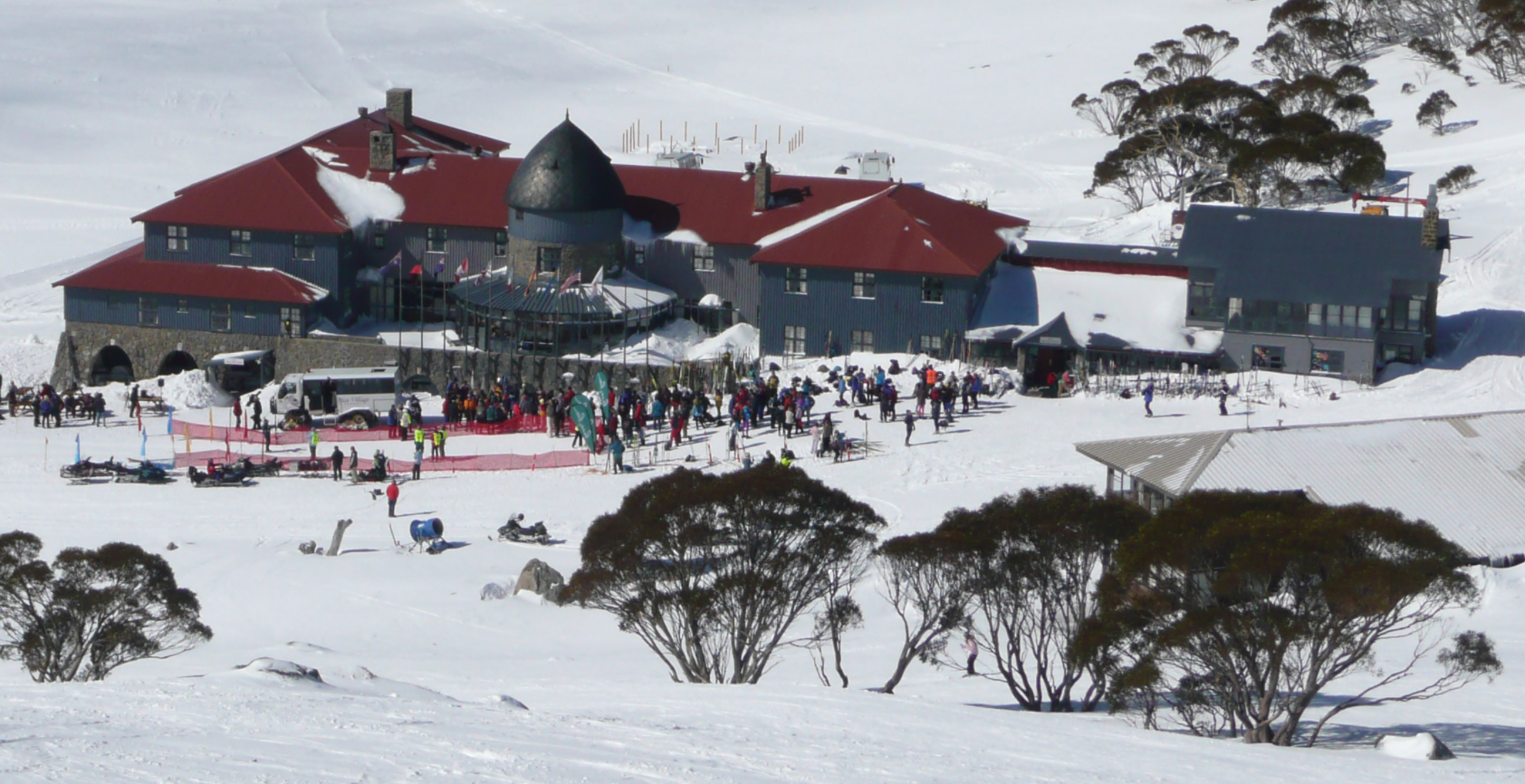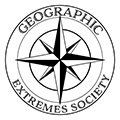GEOGRAPHIC EXTREMES SOCIETY
AUSTRALIAN RECORDS
Cold
Coldest temperature in Australia
The Bureau of Meteorology records shows that the coldest mainland temperatures in Australia have been recorded at Charlotte Pass, near Mount Kosciuszko in New South Wales, with a temperature of -23.0oC on June 29, 1994.

Charlotte Pass. Coldest temperature in Australia. Image: Wikimedia commons
The records appear quite straight forward to me. A standard Stevenson Screen in an open setting achieved the record low temperature, and it correlates to surrounding thermometers at other Bureau stations. However, anyone wanting to view the site of Australia’s lowest temperature will, unfortunately, leave disappointed. After providing valuable data since 1930, the meteorology station closed without warning in 2015. For reasons which will soon become apparent, this temperature record at Charlotte Pass may hold for some time.
To the south, in the Victorian Alps, Mount Hotham has recorded Victoria’s unofficial coldest temperature of -13oC, a full ten degrees warmer than over the border. The difference between the Victorian temperatures and the Snowy Mountains temperatures intrigues many people. The Mount Hotham Station lies 120 km to the south-west, and at an altitude which is 100m higher than the abandoned Charlotte Pass weather station. It seems that being closer to the poles and higher in elevation doesn’t always guarantee colder extreme temperatures. On the same night that Charlottes Pass recorded an Australian record of -23oC, Mount Hotham recorded just – 9.2oC.
What makes Charlotte Pass incredibly cold is its surrounding topography. Extreme frigid temperatures can be achieved on calm, clear nights when masses of cold, dry air get trapped. On these nights, the denser and heavier cold air sinks to the bottom of high valleys and adjacent depressions, making them far colder than the exposed windier locations of mountains tops. On cloudless, still, winter nights at Charlotte Pass, cold air sinks from Mount Kosciuszko and the other surrounding peaks above 2,000 metres, filling the valley with frigid air. Accompanying inversion layers in the atmosphere trap frigid air on top of snow and ice in the valleys of Charlotte Pass and nearby Kiandra, further dropping the temperature.
As I’ve stated, the record minimum temperature in Australia is straight forward stuff. Tasmania has also recorded temperatures of -13oC, but the island state lacks the topography to create the frigid temperatures found around Kosciuszko. Further south, Macquarie Island is cold, but the Furious Fifty winds blowing at these latitudes preclude the island from achieving the necessary conditions to achieve temperatures below -20oC. On Heard Island, there may be depressions high amongst the glaciers which at times could favour extremely cold temperatures, but these sites lack an automated weather station. Of the two automated stations on Heard Island, both are closed at present.
World’s Coldest Temperature
Many geographic and climate records lie within the Australian Antarctic Territory. The highest point at 4,093 metres is Dome A, formerly called Argus Dome, which isn’t a mighty peak at all, but part of a raised ice dome on the Antarctic plateau. It’s not far from the peak of Dome A that the coldest temperature recorded on Earth was measured. On July 21, 1983, an incredible -89.3oC was recorded at the Soviet now Russian, Vostok Station, The base is located 3,488 metres above sea level in the centre of the East Antarctic Ice Sheet. Extending out from Dome A is a 60-kilometre-long, 10-kilometre broad ridge known as Ridge A. Among depressions below these ridges, scientists speculate that it is possible to record even colder temperatures.

Vostok Base. Coldest Temperature recorded. Image: Ekaykin, 2003
In 2005, a Chinese-Australian research team established an automated weather station on the very peak of Dome A. To date, the coldest temperature recorded is -82.5oC in July 2005. The wind here on top of Dome A is negligible, averaging a lazy two kilometres per hour. Even the air pressure in this extreme locality is impressive, with an average of only 574 hPa. The planets average pressure is almost twice as high at 1013 hPa. While working at Dome A, researchers have to deal with altitude sickness and often resort to the use of oxygen to assist breathing. This region is also one of the driest parts of the planet, with only an average of 22 millimetres of precipitation per year, all falling as snow. NASA identified this site to be the very best place on Earth for astronomy, due to the absence of a host of factors including water vapour, winds, airglow, cloud cover and rain.
Cold Records
GES Record: Coldest Australian Temperature – Charlotte Pass. 29th June 1994. -23.0o C. (Source: Bureau of Meteorology)
GES Record: Coldest World Temperature – Vostok Base, Australian Antarctic Territory. July 21, 1983, −89.2 °C (Source: NOAA)
State Records Source: Bureau of Meteorology (unless stated)
NSW −23.0 29 June 1994 Charlotte Pass (Kosciusko Chalet)
Tas. −13.0 30 June 1983 Tarraleah Village & Butlers Gorge & Shannon HEC
Vic. −11.7 3 July 1970 Falls Creek, 15 June 1965, Omeo Comparison
Qld. −10.6 12 July 1965 Warwick (The Hermitage), 23 June 1961, Stanthorpe (Leslie Parade)
SA −8.2 20 July 1976 Yongala
NT −7.5 17 July 1976 Alice Springs Airport
WA −7.2 17 August 2008 Eyre
The Geographic Extremes Society welcomes any input as to the veracity of these records and we encourage everyone to contribute to these extreme records by contacting us to initiate the discussion
